Poland. Silver Proof Coins Mark 100th anniversary of the Concordat Between the Holy See and Poland
The National Bank of Poland release rectangular-shaped proof coins marking an important national anniversary.
Both Russia and Germany contested the Treaty of Versailles that ended World War I and established a reborn Polish Republic as part of the accompanying peace treaty. In 1925, Poland was forced to pursue a defensive policy as the newly emerged German Republic denied Poland’s rights to western lands through diplomacy and economic pressure. Additionally, special vigilance also had to be exercised with regard to the successor to Imperial Russia, the Soviet Union and their foreign policies linked to Germany since 1922 by the anti-Versailles Treaty of Rapallo. Soviet Russia began to send communist agitators across the border as part of their attempt to separate and ultimately annex eastern parts of Polish territory.
Thus, the concordat between the Holy See and the Republic of Poland was seen as an extremely important diplomatic mission which was concluded on the 10th February 1925 after only six months of negotiations. The main negotiator on the Polish side was Minister Stanisław Grabski, leader of the National Democracy Party and brother of the-then Prime Minister Władysław Grabski. His initial his audience with Pope Pius XI, regarded as a friend of Poland, who served as Apostolic Nuncio to Poland as Achille Ratti from 1919 to 1921 was regarded as very positive. The international agreement between the Second Polish Republic and the Holy See and with it the country’s permanent into metropolises and dioceses, strengthened the stability of its borders, while for the Catholic majority it gave a sense of identification with the free homeland. Therefore, during the vote for ratification of the concordat by parliament, even political parties hostile to the agreement and who favoured a strict separation of Church and State decided not to vote against its ratification with some parliamentarians abstaining. Additionally, representatives of the national Christian democratic and conservative parties, as well as the People’s Party accepted the agreement and the ‘yes’ vote with undisguised satisfaction.
It wasn’t until September 1945, and after the end of the Second World War, that communist authorities in control of the government imposed by Moscow unilaterally broke the concordat of 1925. The new agreement came into being in 1993 but only after Poland regained its independence and during the pontificate of St John Paul II. To this day, it is a guarantee of the nation’s proper understanding of the extraordinary role of the Catholic faith on Polish territory.
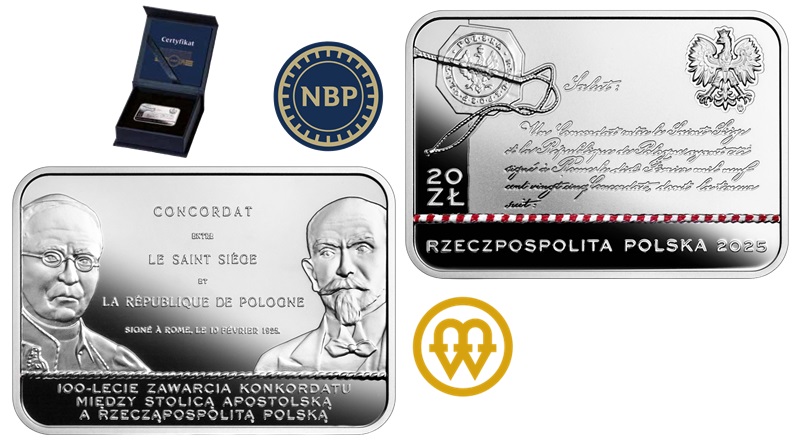
The rectangular-shaped silver proof coins are produced by the Mennica Polska – Mint of Poland at their facilities in Warsaw and on behalf of the National Bank. Designed by Dominika Karpińska-Kopiec, the obverse side depicts the front-facing images of Pope Pius XI and President Stanisław Wojciechowski, whose signatures appear on the ratification document. Between the two images is text in French which reads CONCORDAT ENTRE LE SAINT SIEGE ET LA REPUBLIQUE DE POLOGNE SIGNE A ROME LE 10 FEVRIER 1925. Below the portraits is the commemorative inscription 100-LECIE ZAWARCIA KONKORDATU - MIĘDZY STOLICĄ APOSTOLSKĄ - A RZECZĄPOSPOLITĄ POLSKĄ (100th anniversary of the conclusion of the concordat between the Holy See and the Republic of Poland). The reverse side features a replicated image of the state seal of the Republic of Poland on the last page of the original document of ratification in French, and an extract from the text: “Salut: Un Concordat entre le Saint-Siège et la République de Pologne ayant été signé à Rome le dix Février mil neuf cent vingt cinq, Concordat, dont la teneur suit:” (Greetings: A Concordat between the Holy See and the Republic of Poland having been signed at Rome on the tenth day of February one thousand nine hundred and twenty-five, Concordat, the tenor of which follows). To the lower left is the coin’s denomination 20 ZŁ and under a ribbon of white and red, the text and year of issue, RZECZPOSPOLITA POLSKA 2025.
| Denomination | Metal | Weight | Dimensions | Quality | Mintage Limit |
| 20 Zlotych | .999 Silver | 28.2 g. | 40 / 28 mm. | Proof & Colour | 8000 |
Available from the 6th February, the silver proof and colour coins are encapsulated and presented in a heavy-gauge lined card case, accompanied with a certificate of authenticity. For additional information on these and other coins issued from the National Bank of Poland, please visit their e-webshop.

Download the Greysheet app for access to pricing, news, events and your subscriptions.
Subscribe Now.
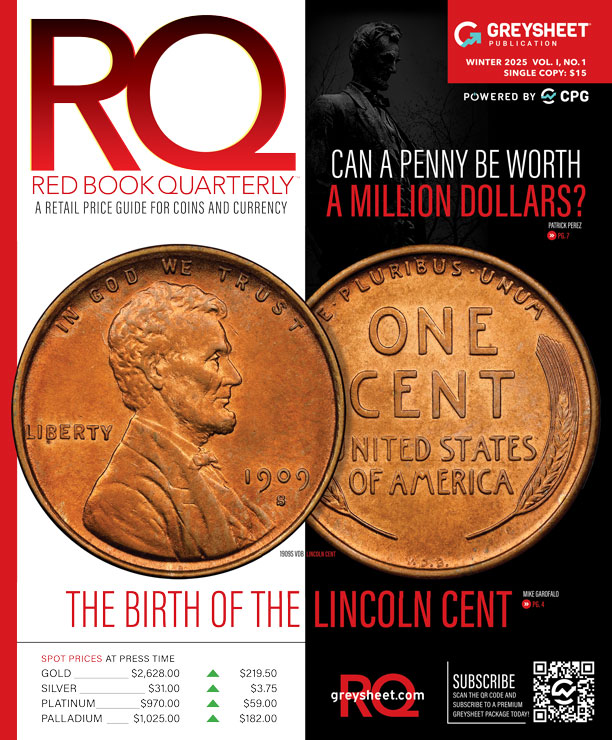
Subscribe to RQ Red Book Quarterly for the industry's most respected pricing and to read more articles just like this.
Author: Michael Alexander


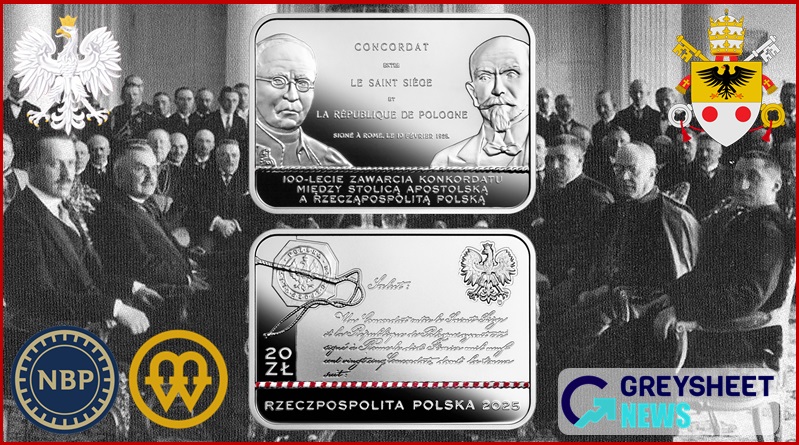






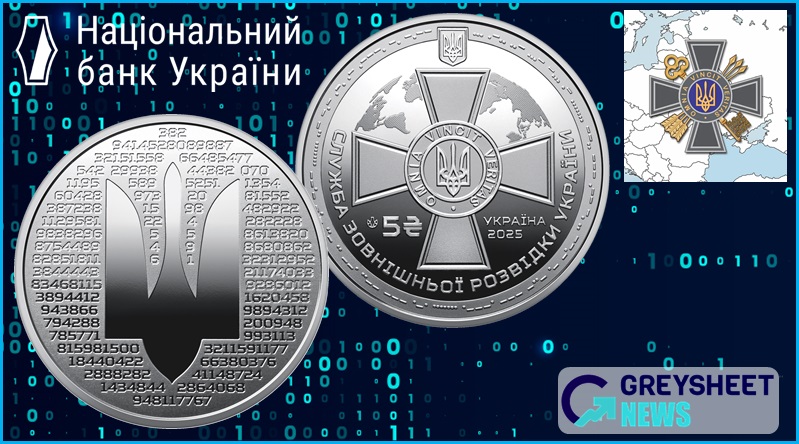
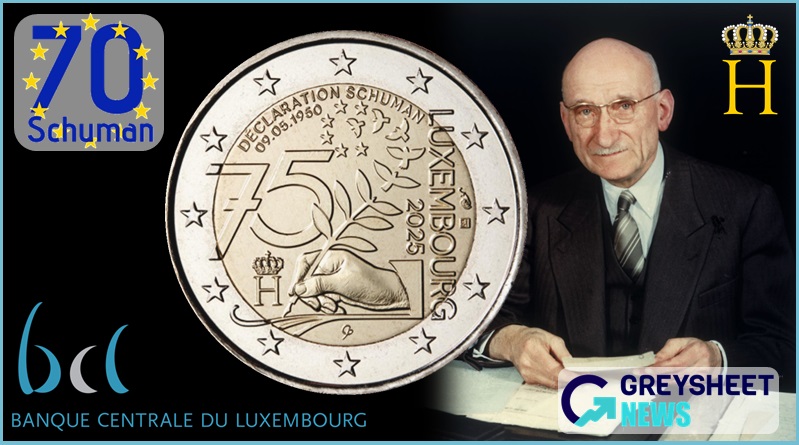

Please sign in or register to leave a comment.
Your identity will be restricted to first name/last initial, or a user ID you create.
Comment
Comments